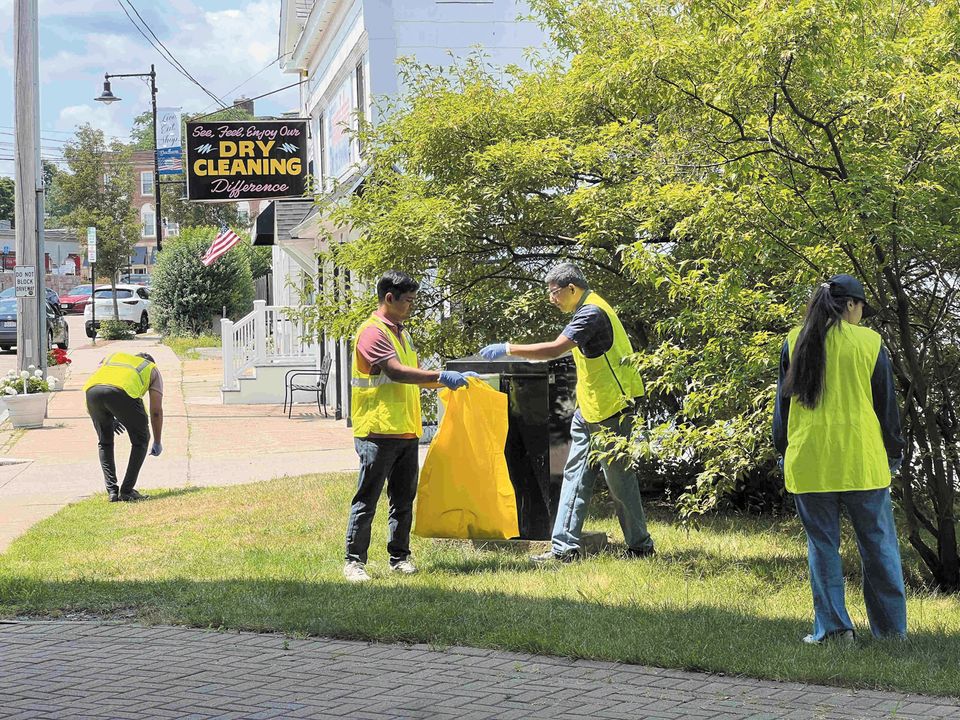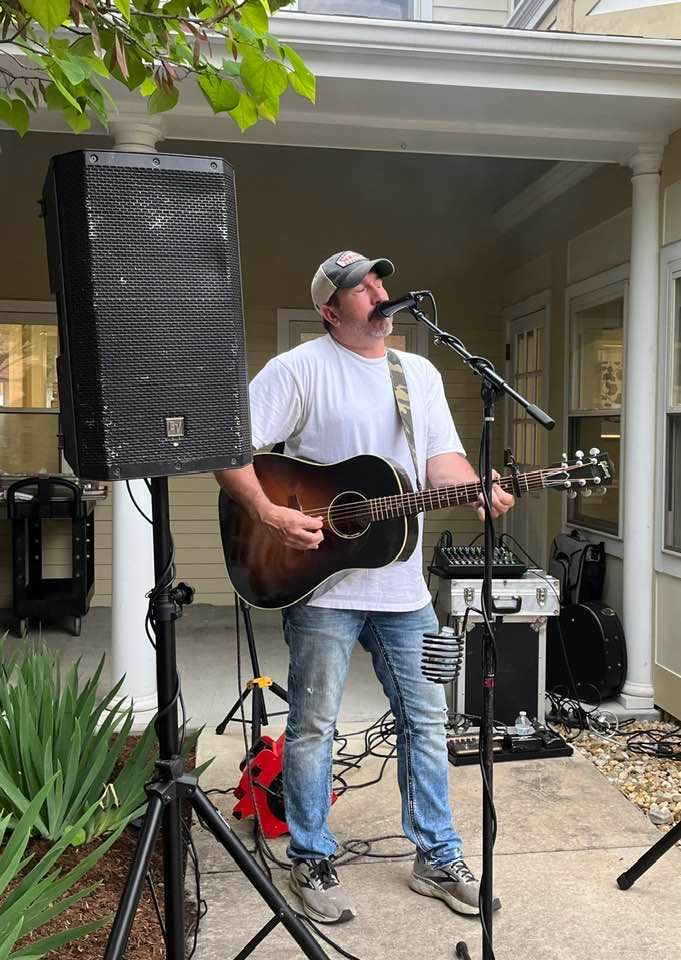June 12, 2024 (SUDBURY, Massachusetts) – As a young mother to a child with severe disabilities, SMILE Mass founder Lotte Diomede quickly realized the world wasn’t built for children like her son, Nicholas. One day, Lotte tried to take Nicholas and his sister to their neighborhood park in Sudbury, MA, only to find that it didn’t have a swing that both kids were able to use. Her daughter Annabelle could enjoy the freedom of swinging high into the sky, while Nicholas had to watch from outside the fence of the playground. This life-changing moment sparked a determination in her and she approached the Parks and Recreation Department to see what could be done. Driven by a profound love for her children and a vision of inclusivity, she spearheaded an accessible playground project along with hundreds of other volunteers in the community and the first playground in MetroWest with a universal design, opening the door to simple joys and unforgettable moments for countless families.
Since that time, SMILE Mass (Small Miracles in Life Exist) “swung” into becoming a 501C3 non-profit organization that helps families raising children or adults with disabilities enjoy happy, healthy memories through education, vacation, and recreation experiences. Though every season is vibrant and energetic for the MetroWest-based non-profit, the organization is at its most active during the late spring and summer seasons, when many of its programs are in full swing.
“Life memories are often made as the weather gets warmer and families vacation together,” explained Lotte. “For those with a physically disabled family member, such a day can be far from relaxing, often filled with struggles and unexpected challenges due to the lack of accessibility to the beach and a consistent schedule. It was an extension of our playground project when we brought accessibility to the beach.”
Since its inception, SMILE Mass has donated more than 180 floating beach wheelchairs to public ponds and beaches throughout New England to make them more accessible to the disabled. The colorful chairs allow beachgoers with mobility disabilities to travel over the hot surface of the parking lot, roll seamlessly over the thick beach sand, and plunge right into the water like their typical friends and family. The chairs recline into three different positions and have two large wheels at the back and a smaller wheel in front allowing them to be pushed through the sand with relative ease. As a floating device, the chair can be immersed in the water and float gently with the tide. There isn’t a more relaxing way to enjoy a summer day than spending it on the beach.
Due to the overwhelming demand for the program, the organization launched the SMILE Mass Floating Beach Wheelchair Awards Program, which allows towns and cities to apply for their floating beach wheelchair. Officials associated with the city or town, or residents could apply for the award to make their beach location more accessible.
SMILE Mass recently presented new chairs to the towns of Newburyport, Amesbury, Manchester by the Sea, and the Massachusetts Audubon Society in Barnstable with additional chairs to be gifted to Easton, MA, Nahant, and Standish ME in the coming weeks. Due to the success of the program, the town of Dennis added 20 new chairs to their beaches.
“We are grateful to beach and recreation director Dustin Pineau for being such an active proponent of accessibility. To say we have had success is an understatement – with the support of SMILE Mass, it is clear that the town of Dennis understands the importance of the program as they retire older chairs and consistently strive to make their fleet better.”
“We present the chairs surrounded by some excitement. It’s a big event when accessibility is introduced or expanded in an area, and the decision of the town or municipality to promote accessibility should be celebrated. People with disabilities have the same rights as others, and enjoying a day at the beach is not just a luxury but a right that anyone should be able to experience. We recently had wonderful events in Newburyport and Amesbury where a large contingent of townspeople with and without disabilities came to cheer on the town’s commitment to accessibility.”
You can find a list of other participating beaches where the SMILE Mass chairs are located at
https://smilemass.org/initiative/beach-wheelchairs/.
SMILE Mass also operates a free equipment loaner program for families with disabled family members who may be going on a day, week, or extended vacation.
“The loaner program was started as an extension of the beach wheelchair program, explained Lotte. “Once word got out about the beach wheelchairs we were donating to public beaches, people started calling because they vacationed in an area that did not yet have one of the donated chairs.”
To help alleviate that issue, SMILE Mass started a loaner program out of Sudbury, Massachusetts. Families can borrow adapted equipment to take anywhere. The inventory includes floating beach wheelchairs, a bath chair with a back, a blue Freedom running stroller, a Hoyer lift, portable ramps and so much more. Any of these items can be borrowed to help families enjoy a day of recreation or a vacation away from home with the right amenities.
SMILE Mass also owns a fully accessible vacation home on the beautiful Truro beach in Massachusetts, providing families with disabled loved ones a much-needed break and an inclusive environment to create lasting memories. The handicap-accessible beachfront condo sits just 75 feet from the ocean and allows accessibility for any family traveling with loved ones with disabilities. The condo sleeps six, with a private beach, two bedrooms, two bathrooms, a roll-in shower, adapted equipment with a universal design flair and all exterior doors have ramps to allow easy access for those
Club SMILE Mass, the organization’s fastest-growing program to date, consists of hybrid classes to stimulate clients with disabilities both mentally and physically. Classes include access to one-on-one gym and swim or small group classes, swimming classes at Atkinson Swimming Pool in Sudbury, and seven-day-per-week access to any LA Fitness in Massachusetts. The program also includes in-person social groups, including music therapy, book club, storytime, bingo, small group workout classes, bike evaluations via Zoom, and more. A physical therapist performs the bike evaluations. All trainers of Club SMILE Mass are specially trained to work with people with disabilities.
“We have received dozens of inquiries from families and organizations struggling with the lack of available services due to the labor shortage in the healthcare sector. These services were previously available to this vulnerable population but dried up during Covid,” continued Diomede. “Through Club SMILE Mass, we provide much-needed daily activities with a focus on movement. There are currently no existing clubs for someone with disabilities, which is a huge problem, and this is why Club SMILE Mass has become so popular.”
SMILE Mass plans to purchase land, which will be the home of “Club SMILE Mass, Community within a Community,” to help bring a sense of equity and inclusion to the severely disabled population in MetroWest. “Our goal is to create a hub that becomes the leading source of a well-rounded program that takes clients after school age and well into adulthood. Our clients never age out of the program.”
“We have been working to reach an agreement with the owners of a property in MetroWest to complete the acquisition of the property. The property will allow us to bring our Club SMILE Mass program in-house and provide immediate relief to thousands of families in Massachusetts currently without services. This is why fundraising is especially critical,” explained Ms. Diomede. Every dollar raised is something we didn’t have prior. Each donation will make a profound difference directly into the community
“This is our biggest undertaking yet,” continued Lotte. It is an opportunity for those who believe in equity and equality to resolve a national crisis following the pandemic. We are a grass-roots organization that receives no state funding. All our programs are made possible through grants, fundraising, annual sponsorships, and donations by those who know of all the good SMILE Mass does for the population of the disabled and their families.”
We rely on our existing donors, new donors, and sponsors to take us through each phase of the three-phase Capital Campaign. There is a donation level for everyone, regardless of your financial means.” To donate to the Capital Campaign or any of our programs, visit the SMILE Mass website at
smilemass.org or call Lotte at 617-967-7755.
About SMILE Mass: Small Miracles in Life Exist (SMILE Mass) is a 501 C3 non-profit organization dedicated to helping families raising children or adults with disabilities enjoy happy, healthy memories through vacation and recreation experiences. For more information, visit
www.smilemass.org













